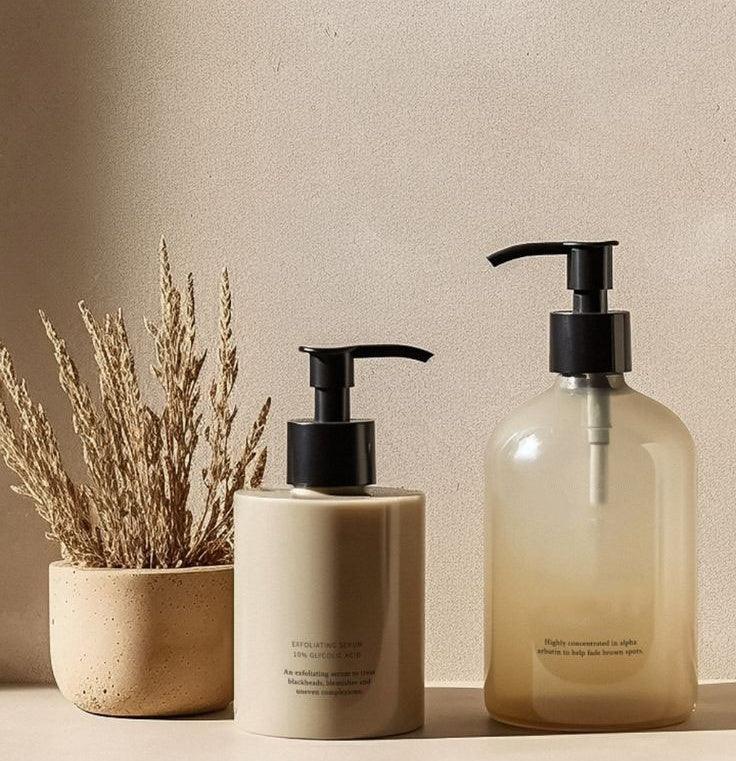Search
-
-
How to Customize ...
Dec 11, 2025 -
Eco-Friendly Perf...
Dec 01, 2025
Archive
- December 2025
- November 2025
- October 2025
- September 2025

How Are Shampoo Bottles Manufactured?
Ever wondered how your favorite shampoo bottles are made? Whether you’re looking for wholesale shampoo bottles for your business or just curious about the magic behind shampoo bottle packaging, you’re in the right place. Let’s pull back the curtain on the manufacturing process and explore how these essential beauty products come to life!

1. From Idea to Design: Crafting the Perfect Shampoo Bottle
It all starts with an idea. Before you can see those bottles on the shelf, brands put a lot of thought into how they want their shampoo bottle size and shape to look. Custom design is key here, and brands choose whether they want simple, practical packaging for mass-market appeal or something more personalized—think travel-sized shampoo bottle for travel that fits perfectly in your bag or custom designs to stand out on the shelf.
Designers sketch out the bottle’s shape, structure, and shampoo bottle dimensions, ensuring it holds the perfect amount of product without being too bulky or small. Once the design is finalized, molds are created to replicate the bottle in bulk.
2. Material Selection: Plastic is the Key
Next up, it’s time to choose the material. Shampoo bottles are commonly made from plastics like PET or HDPE. These materials are lightweight, durable, and recyclable, making them ideal for shampoo bottle plastic packaging. The choice of plastic affects durability and transparency, which is important for showcasing the product .
And let’s not forget about sustainability! As consumers become more eco-conscious, brands are shifting toward refillable shampoo bottles. These innovative designs allow customers to reuse their favorite bottles, reducing waste and minimizing environmental impact. It’s a win-win for both convenience and sustainability.
3.The Manufacturing Process: From Design to Production
Once the material is selected, it’s time for the magic of manufacturing. The chosen plastic is melted and injected into molds through a process called injection molding. This ensures that every bottle has the same shampoo bottle size and shape, maintaining consistency across the production line.
The shampoo bottle dimensions are carefully calibrated to hold the right amount of product—whether it’s a travel-sized mini or a large bottle for family use. Precision is key here, as even the slightest variation can affect the bottle’s functionality and aesthetic appeal.
4.Adding the Finishing Touches: Customization and Decoration
Here’s where the fun happens—decoration! Shampoo bottle clipart, logos, and branding come to life during this phase. Whether it’s a sophisticated purple shampoo bottle that uses elegant fonts or a vibrant design that screams fun, customization is key.
Decorating the bottles involves techniques like screen printing, hot stamping, or applying labels that are both visually appealing and durable. Shampoo bottle instructions may also be included on the packaging to guide customers on how to use the product effectively. And for those extra functional designs, you might even see a shampoo bottle clip that lets users easily hang their bottle in the shower.
5. Quality Control: Testing for Perfection
Now, don’t think just because the bottle looks great, it’s ready to ship off immediately. Quality control comes into play here, making sure that every bottle meets the right standards. From checking for defects in the shampoo bottle plastic to ensuring each bottle’s shampoo bottle dimensions are precise, no detail is left unnoticed.
Bottles are tested for durability and how well they’ll hold up during shipping, ensuring no leaks, cracks, or spills. Whether the bottle is small for travel or larger for at-home use, it has to perform flawlessly.

Conclusion
From the first sketch to the final product, making a shampoo bottle is a perfect blend of artistry and precision. Whether it’s choosing the right shampoo bottle size or selecting eco-friendly materials for refillable bottles, every step is thoughtfully designed to meet consumer needs. As the personal care industry continues to evolve, manufacturers must stay ahead of trends by embracing sustainability, innovation, and consistency.
Contact us
Add: Building 7, Bairui Wuhuan Industrial Park, Taxi Road, Jinghe Street, Dongxihu District, Wuhan City, Hubei Province 430040, China
(+86)18963979371
(+86)027-83372627
info@snpacks.com









